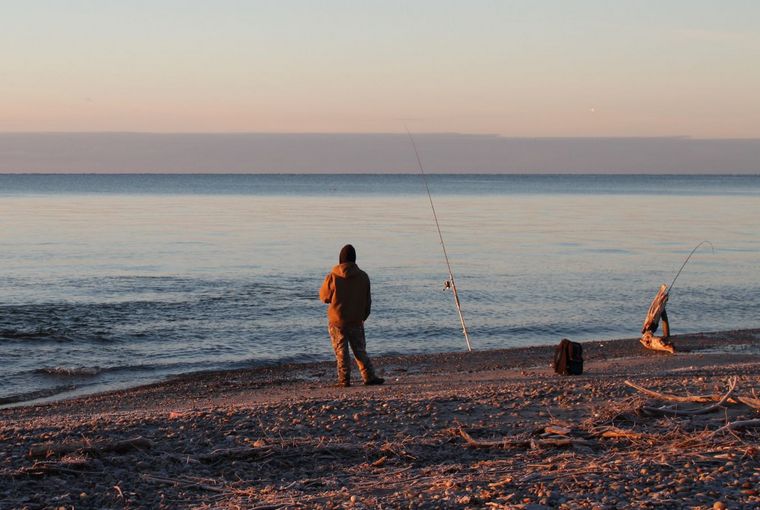
When steelhead start to “stage” (gather) ahead of their spawning run, the actual stage they enter is a rivermouth, estuary, or shallow bay — also known as “frog water,” because of their slow flows. These areas provide an ideal sneak peek for any fans of this scintillating piscatorial star.
Showtimes
Early spring or late fall is the best time to get at these starlets. When good numbers of steelhead have just entered a rivermouth or estuary, you’ll find them easy to please. Large bug and minnow imitations, dew worms, roe, and roe imitations get their fair share of attention. Bottom-fishing, float fishing, and spoon chucking are all productive. It’s a dazzling time to be fishing frog water, but it lasts only as long as the fish are fresh. Within a few days, or minutes, it can all be over.
In the spring, rain is promising, but watch for warming trends. Anything that pushes water temperatures above 4˚C (39˚F) can trigger a run. Warm rains always help achieve this, but a good shot of sunshine can do it, too.
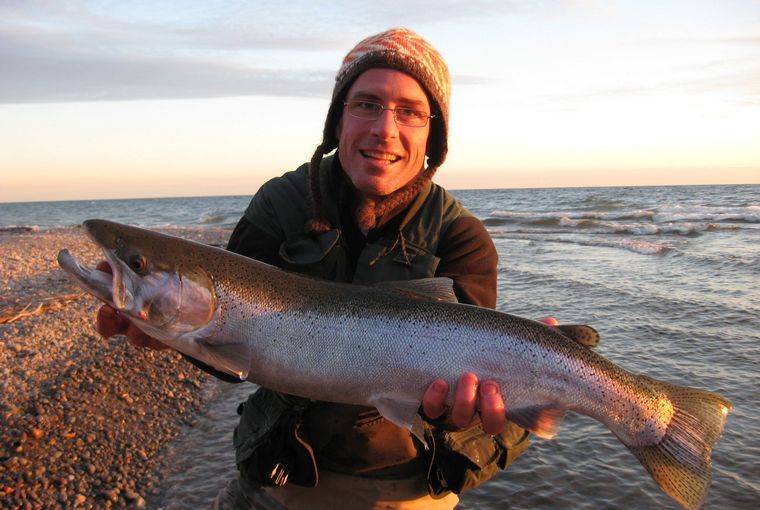
Lights
The most often overlooked factors when steelhead are staging are sunlight and water clarity. Dismiss these details at your own risk!
In early spring or very late fall, when ice may be present, a sunny spotlight can get the show on the road (it can have the opposite effect in early fall).
As for water clarity, one to three feet of visibility is always desirable.
Measure your offerings based on light availability. In the early morning, dusk, or evening, bigger is better. The same goes for turbid waters; you don’t have to be as subtle when light conditions are low. However, in bright conditions or if the water is very clear, shrink things down.
Steelhead stage fright
When steelhead have taken the stage, they are always eager for a tasty snack. But heavy fishing pressure or a long time spent in the river, breeds caution. They can easily become finicky and unwilling or unable to put on a fresh performance.
The same thing can be said about very clear conditions. If fish can see the line, the float, the tackle — or the person on shore casting it at them — it’s often not conducive to success. These fish are always on the lookout for predators. There are a few tricks to get around this:
Target deeper fish: The ones you see closer to the surface are wary and unlikely to be enticed. Fish that are down deep also have better cover and are more likely to make allowances.
Move around: By this, I don’t mean scare the fish, but try different spots. If you hook or land a fish in clear water, you probably scared the rest of the crew off stage. Give them time to calm down by fishing elsewhere for a while.
Downsize your presentation: If you are float fishing go-to small flies, such as Hare’s Ear nymphs or Wooly Buggers on #6 hooks, single eggs, or small red wigglers. Small, 8 and 6 mm beads can be surprisingly effective. Little spoons or spinners will greatly benefit the spinning angler. And never underestimate banana baits, such as a size F6 or F7 Flatfish.
Curtains
Finally, don’t be fooled by sluggish current. Steelhead enter these areas early in the season, when they’re fresh and energetic. So it’s where they often put on their most unforgettable, heart-stopping performances.
In most of Ontario, staging areas are open to fishing year-round. But always check the fishing regulations to make sure you’re targeting fish in season.

Paul Hurtubise is a lifelong steelhead angler who loves to catch, photograph, talk about, and write about steelhead. He has published a blog for the past 10 years.
Originally published in the April 2020 issue of Ontario OUT of DOORS.


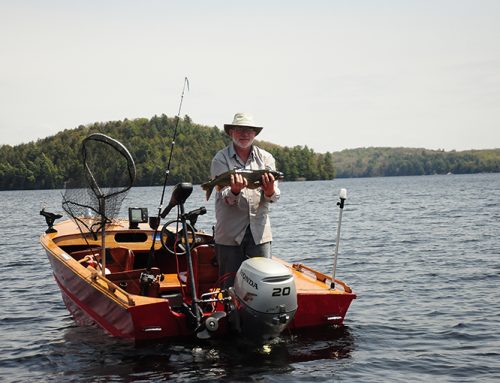
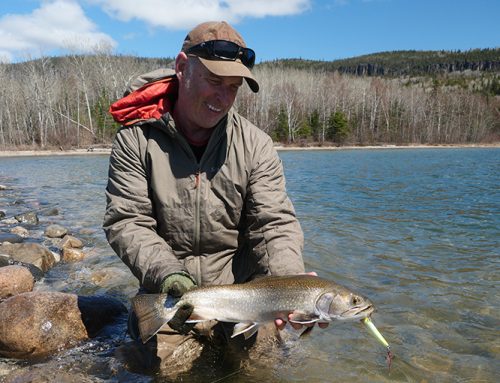
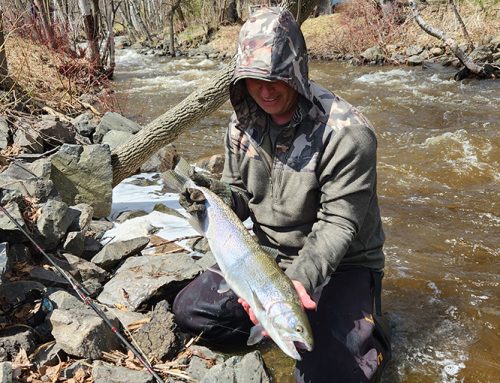
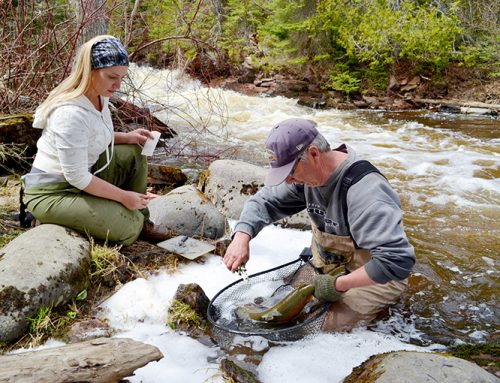
Leave A Comment